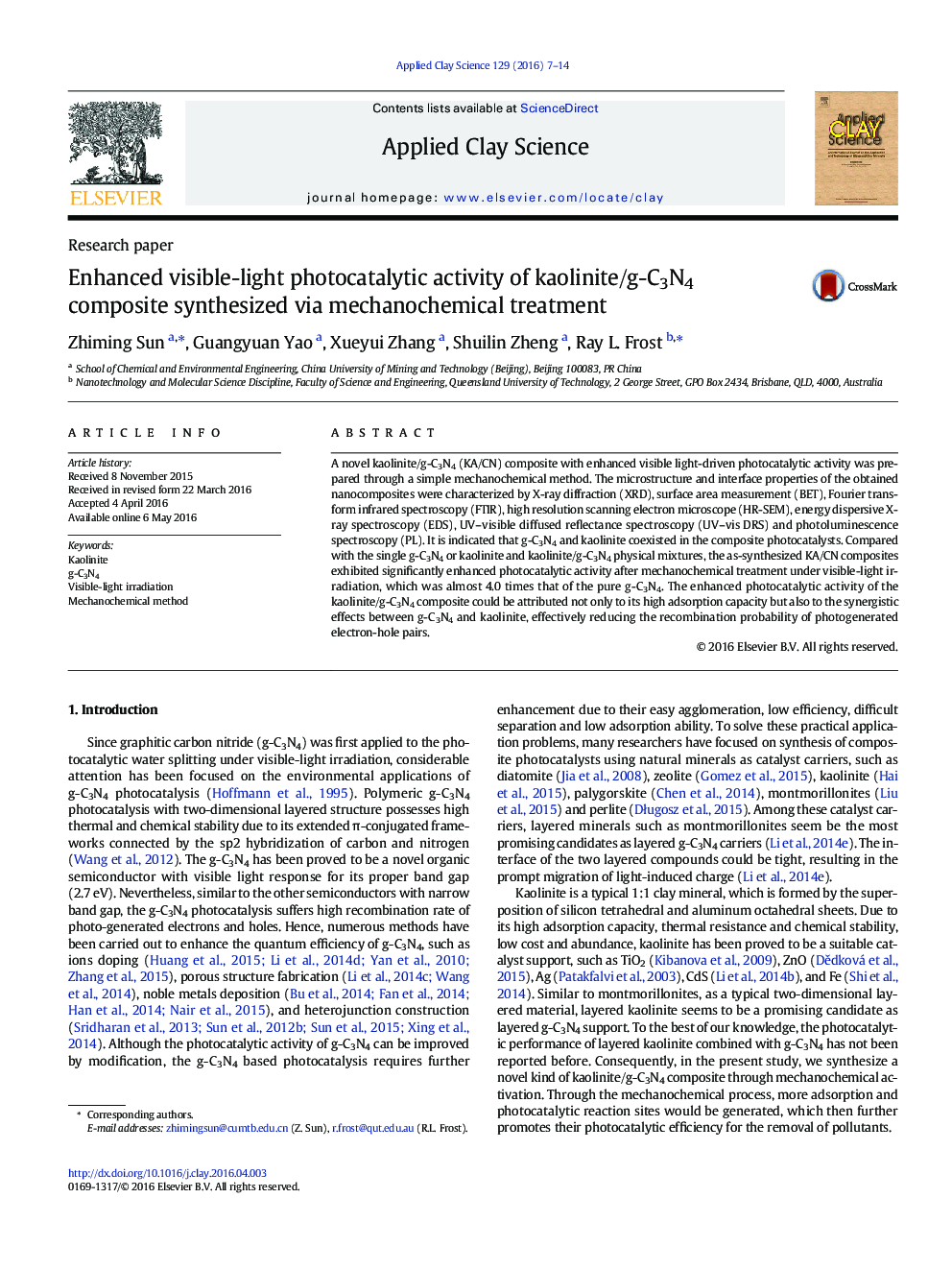| Article ID | Journal | Published Year | Pages | File Type |
|---|---|---|---|---|
| 1694017 | Applied Clay Science | 2016 | 8 Pages |
•Kaolinite/g-C3N4 was fabricated through a facile mechanochemical method.•·KA/CN-40% sample exhibit the optimal photoactivity.•The role of kaolinite in the formation of KA/CN composites is discussed.•The enhanced photocatalytic activities and enhancement mechanism are presented.
A novel kaolinite/g-C3N4 (KA/CN) composite with enhanced visible light-driven photocatalytic activity was prepared through a simple mechanochemical method. The microstructure and interface properties of the obtained nanocomposites were characterized by X-ray diffraction (XRD), surface area measurement (BET), Fourier transform infrared spectroscopy (FTIR), high resolution scanning electron microscope (HR-SEM), energy dispersive X-ray spectroscopy (EDS), UV–visible diffused reflectance spectroscopy (UV–vis DRS) and photoluminescence spectroscopy (PL). It is indicated that g-C3N4 and kaolinite coexisted in the composite photocatalysts. Compared with the single g-C3N4 or kaolinite and kaolinite/g-C3N4 physical mixtures, the as-synthesized KA/CN composites exhibited significantly enhanced photocatalytic activity after mechanochemical treatment under visible-light irradiation, which was almost 4.0 times that of the pure g-C3N4. The enhanced photocatalytic activity of the kaolinite/g-C3N4 composite could be attributed not only to its high adsorption capacity but also to the synergistic effects between g-C3N4 and kaolinite, effectively reducing the recombination probability of photogenerated electron-hole pairs.
